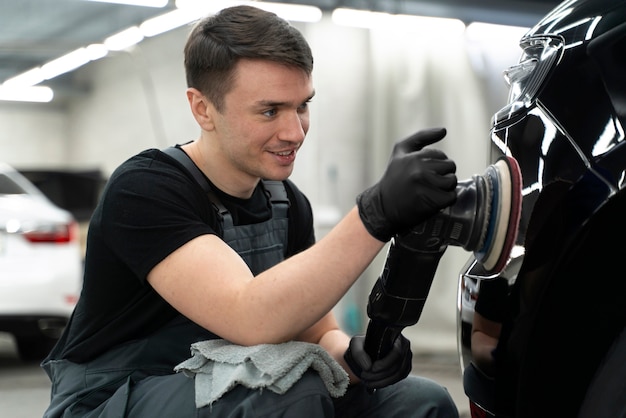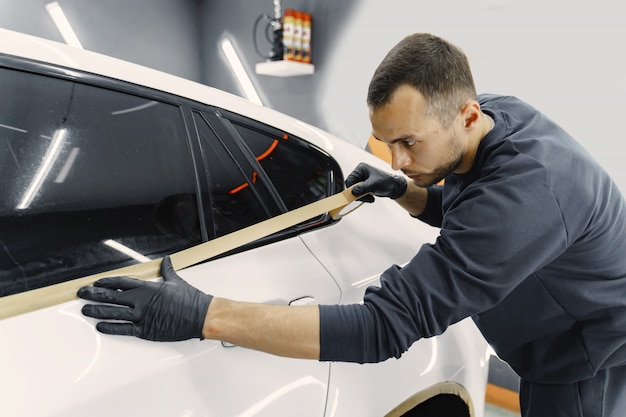The Future Of Automotive Repair: Innovations In Paintless Dent Repair
In the ever-evolving landscape of automotive repair, innovations are continually reshaping traditional methods. Among these advancements, paintless dent repair (PDR) stands out as a transformative technique, offering a cost-effective, efficient, and environmentally friendly solution for vehicle owners.
As we delve into the future of automotive repair, it becomes evident that PDR is poised to play an increasingly significant role. In this article, we explore the innovations driving the evolution of paintless dent repair, its benefits, and the promising prospects it holds for the automotive industry. Check out this link for additional information on paintless dent repair.
Understanding Paintless Dent Repair
Paintless dent repair is a technique used to remove minor dents and dings from the body of a vehicle without the need for traditional bodywork and paint. Instead of filling the dent with putty and repainting the affected area, PDR technicians use specialized tools to massage the metal back into its original shape, restoring the vehicle's appearance seamlessly.
The appeal of PDR lies in its ability to preserve the vehicle's factory finish while significantly reducing both the time and cost associated with traditional repair methods. By eliminating the need for paint and reducing labor hours, PDR offers a more efficient and environmentally friendly alternative for fixing minor dents.

Introduction to Paintless Dent Repair (PDR)
- Definition: Paintless dent repair is a technique used to remove dents, dings, and creases from vehicle body panels without the need for painting or refinishing.
- Process: PDR technicians use specialized tools to gently massage the dent from the underside of the panel, restoring it to its original shape without compromising the vehicle's factory finish.
- Advantages: PDR offers several advantages over traditional dent repair methods, including lower costs, faster turnaround times, and preservation of the vehicle's value.
Innovations Driving the Future of PDR
Advanced Technologies:
The future of PDR is closely intertwined with technological advancements. One significant innovation is the development of precision tools and techniques that enable technicians to tackle complex dents with greater accuracy and efficiency.
3D Scanning and Imaging:
Integrating 3D scanning and imaging technologies into the PDR process allows for more precise assessments of dent severity and better planning of repair strategies. This results in enhanced outcomes and customer satisfaction.
Robotics and Automation:
The incorporation of robotics and automation in PDR has the potential to revolutionize the industry. Automated systems can streamline the repair process, reducing labor costs and increasing consistency in results.
Augmented Reality (AR):
Augmented Reality(AR) technology holds promise for enhancing the capabilities of PDR technicians. By overlaying digital information onto the real-world environment, AR systems can provide technicians with real-time guidance and diagnostics, improving repair accuracy and efficiency.

Benefits of Paintless Dent Repair
- Cost-Effectiveness: PDR is typically more cost-effective than traditional dent repair methods since it eliminates the need for painting and refinishing. This makes it an attractive option for both vehicle owners and insurance companies.
- Time Efficiency: Compared to conventional repair techniques, PDR significantly reduces repair times. In many cases, minor dents can be repaired within hours, allowing customers to get back on the road quickly.
- Environmentally Friendly: Because PDR does not require the use of paints or fillers, it is a more environmentally friendly option. It reduces the generation of hazardous waste associated with traditional bodywork, contributing to sustainability efforts within the automotive industry.
- Preservation of Vehicle Value: Since PDR retains the vehicle's original factory finish, it helps preserve its resale value. This is particularly beneficial for leased vehicles and those with high-end paint finishes.
Promising Applications in the Automotive Industry
Fleet Maintenance:
PDR is gaining traction in fleet maintenance operations due to its cost-effectiveness and rapid turnaround times. By incorporating PDR into their maintenance protocols, fleet managers can minimize downtime and keep their vehicles in optimal condition.
Pre-Owned Vehicle Restoration:
In the pre-owned vehicle market, PDR plays a crucial role in restoring vehicles to their pristine condition. Dealerships and auto retailers rely on PDR to address minor imperfections and enhance the aesthetic appeal of their inventory, ultimately increasing sales potential.
OEM Integration:
Original equipment manufacturers (OEMs) are increasingly recognizing the value of PDR as a repair solution that aligns with their commitment to quality and customer satisfaction. Integrating PDR into OEM service offerings can enhance brand loyalty and differentiate their products in the market.
Challenges and Future Outlook
Training and Certification:
One challenge facing the widespread adoption of PDR is the need for skilled technicians. Training programs and certification standards are essential for maintaining quality and ensuring consistent results across the industry.
Integration with Advanced Materials:
As vehicle construction materials evolve, PDR techniques must adapt to accommodate new challenges. Innovations in PDR tools and methodologies will be crucial for effectively repairing vehicles made from advanced materials such as aluminum and carbon fiber.
Consumer Awareness:
Increasing consumer awareness about the benefits of PDR is vital for its continued growth. Educating vehicle owners about the cost savings, time efficiency, and environmental advantages of PDR can drive demand and expand the market.
The future of automotive repair is closely intertwined with the evolution of paintless dent repair. With ongoing advancements in technology, techniques, and industry practices, PDR is poised to become the go-to solution for addressing vehicle dents and dings. By embracing innovation, leveraging emerging technologies, and prioritizing customer satisfaction, the automotive industry can unlock the full potential of paintless dent repair and usher in a new era of efficiency, sustainability, and quality in vehicle repair and maintenance.

